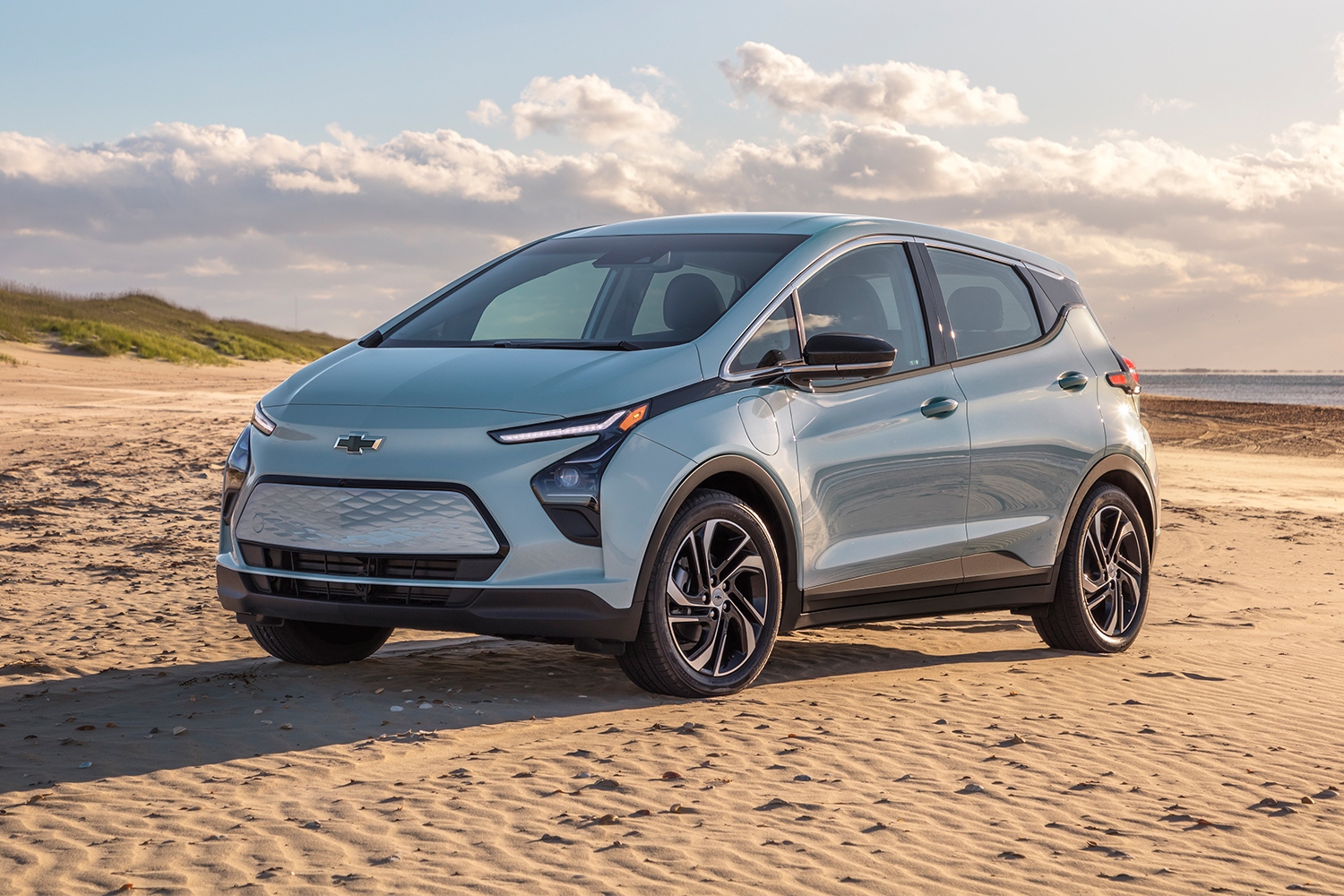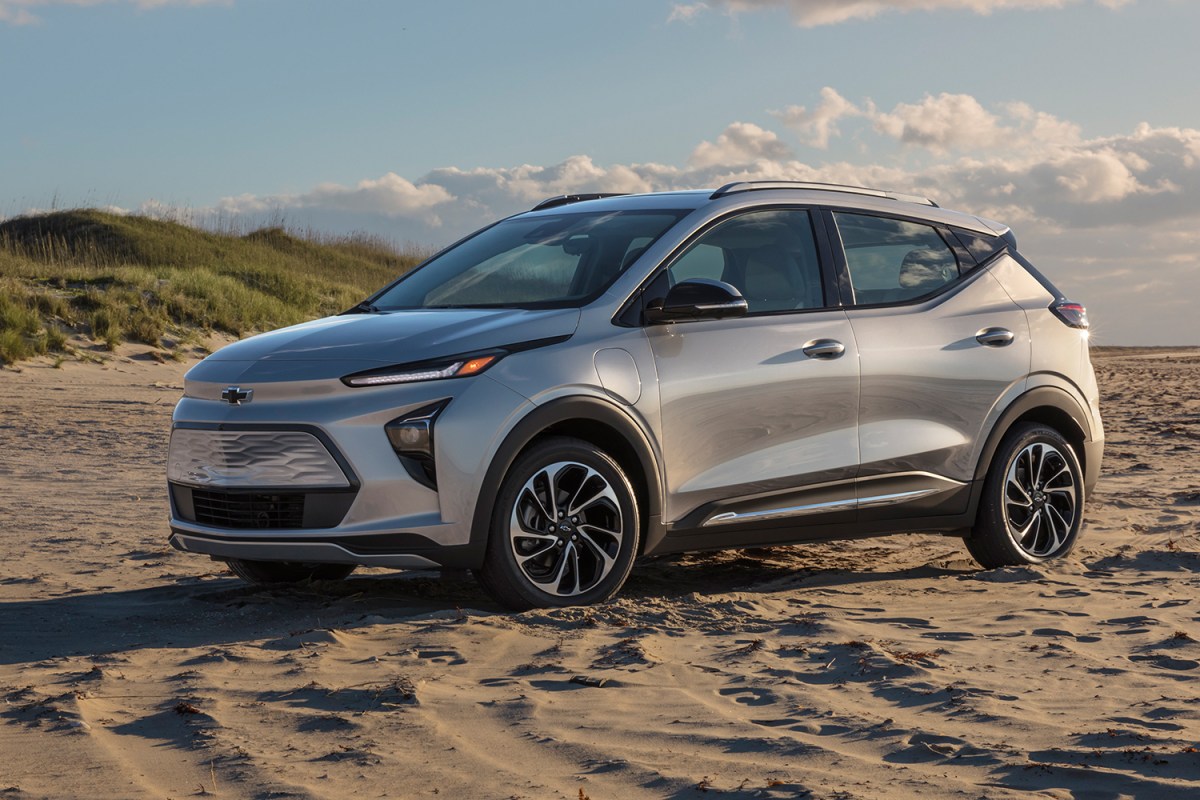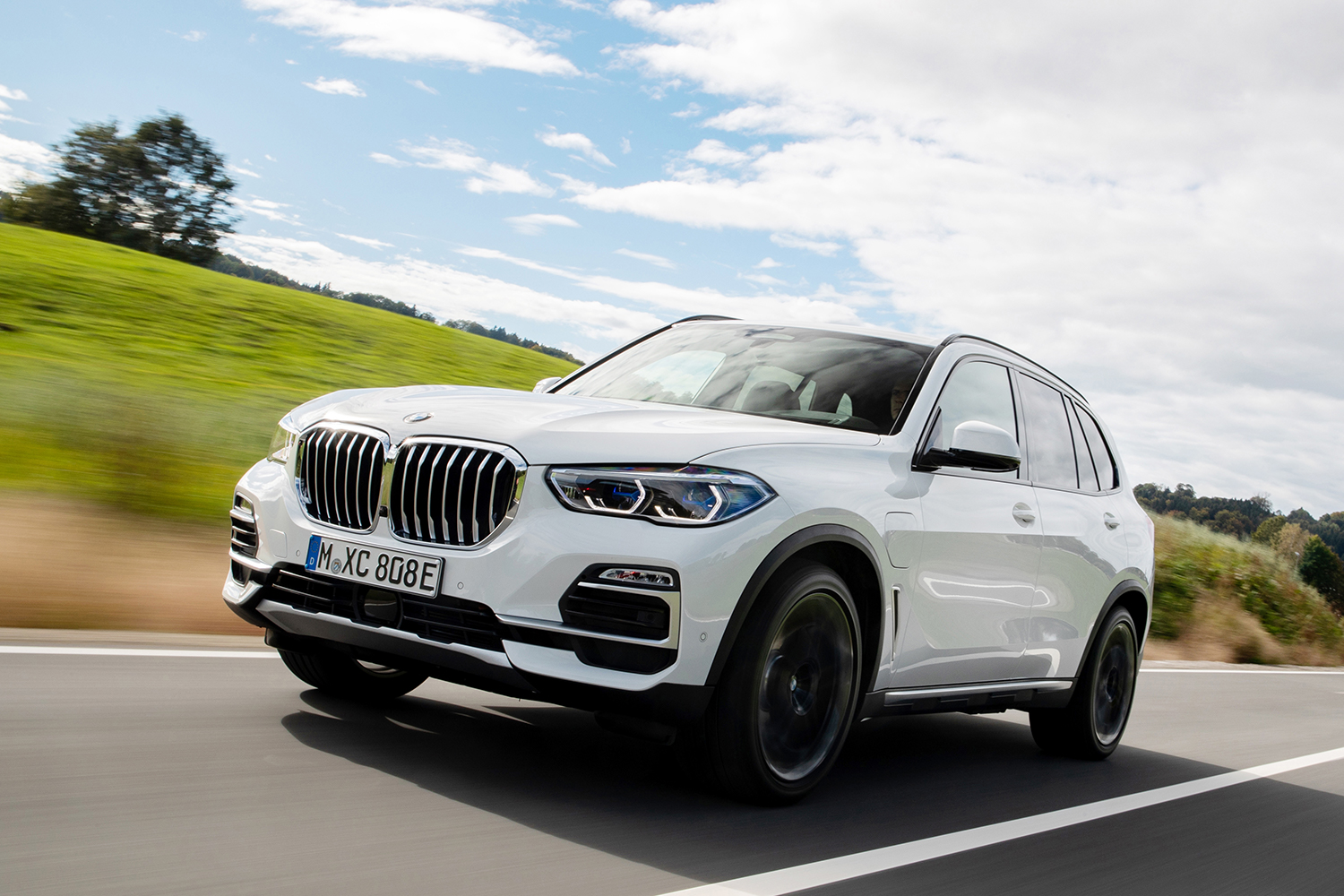If you look at the accolades heaped on the Chevrolet Bolt after it began production in 2016, you’d think the all-electric hatchback was bigger than Tesla. It won awards like North American Car of the Year and was listed as one of Time’s best inventions, but the affordable EV was quickly overshadowed by Elon Musk’s Model 3, which got a place on Time’s list the following year.
If you look at the actual car, it makes sense why it didn’t become a sensation. The Chevy Bolt was initially designed for people who desperately wanted an eco-friendly electric car. It has a compact design that lends itself to those wanting to reduce their footprint, it has a lightning bolt logo prominently displayed on both sides (in case you forgot, the Bolt is electric!), and from the front it even looks like a cartoon character who teaches kids about the benefits of zero-emissions transportation. But most Americans don’t care about that — they just want a good car they can afford, electric or not.
Chevy seems to have figured that out. This week, the automaker unveiled two new versions of the Bolt EV for 2022: an updated take on the classic hatchback and a brand new EUV, an electric utility vehicle that is comparable to compact SUVs. Not only do they look great, but they’re priced even lower than last year’s model. Let us explain.
Right now, you can go to a Chevy dealer and buy a 2021 Bolt EV starting at $36,500. However, when they become available this summer, the standard 2022 model will start at $31,995 and the larger EUV model at $33,995. This price reduction, despite major upgrades, is due to General Motors no longer being eligible for the federal EV tax credit of $7,500. Since buyers can’t count on that rebate, Chevy is lowering the price to keep their economy electric vehicle competitive with cars like the Model 3. (But depending on where you live, your state may offer other financial incentives for buying electric.)
In the design department, the headlights have been slimmed down, the Bolt EV logo has been removed from the front, the blocky panels have been eliminated in favor of a sleeker aesthetic and the cheap-looking grille has been replaced with a panel that has a touch of Frank Gehry to it. These are no longer green pipsqueaks for people who compost — they’re just reasonably priced cars that happen to run on electricity.

Chevy has had a tough time getting people to adopt the Bolt EV, and they’ve also had to deal with the growing pains of introducing electric technology (including recalls associated with fires). But while many other automakers are just introducing their first electric models, and will likely run into similar headaches, Chevy has already worked through a number of issues and the redesigned Bolt is better for it.
In terms of range, the 2022 Bolt will deliver an estimated 259 miles on a full charge and the EUV will deliver 250 miles, though those numbers haven’t been confirmed by the EPA. When hooked up to DC fast charging for 30 minutes, the Bolt can add 100 miles of range and the EUV 95 miles. The Verge has a good breakdown of the rest of the details, though be aware that Super Cruise — the heralded driver assistance system from GM — is only available on the EUV, not the regular Bolt, contrary to their story.
Thanks for reading InsideHook. Sign up for our daily newsletter and be in the know.

















